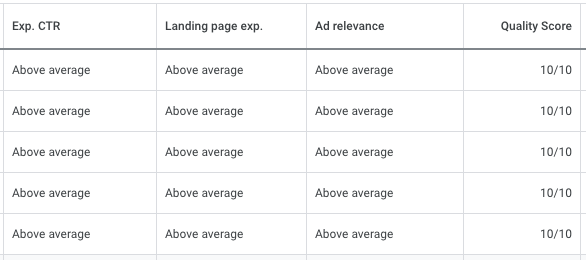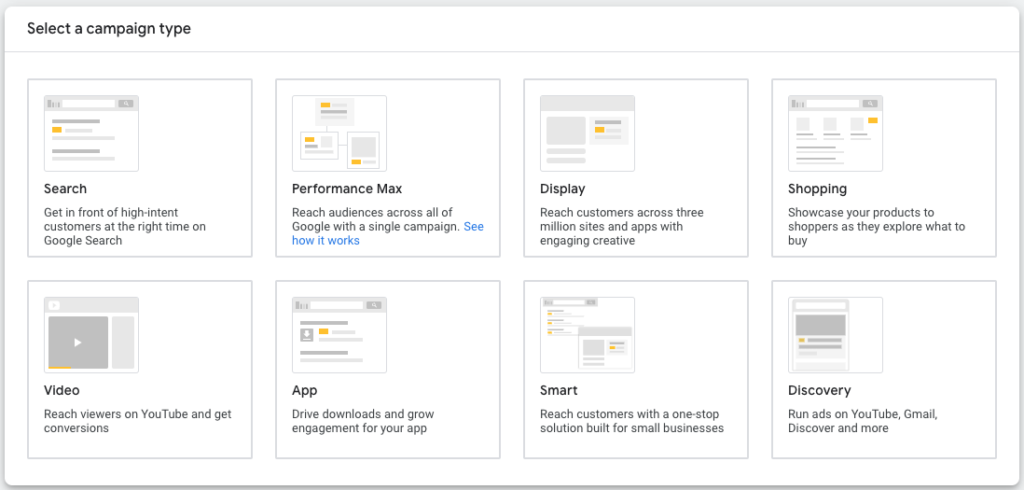5 Of The Most Common Google Ads Mistakes We See
As a full-service marketing agency and certified Google Partner, we’re constantly auditing Google Ads accounts for new clients, revealing mistakes, creating strategies and optimising the campaigns.
This means we’ve seen everything there is to see when it comes to Google Ads campaign set ups – The good, the bad and the ugly.
In this blog we’re going to run down 5 of the most common Google Ads mistakes we see, so that your business can hopefully avoid them.
Mistake #1 – Ignoring Search Terms
Whilst search terms have become slightly less useful over the past few years thanks to Google Ads hiding certain amounts of data from the advertiser’s view, we still feel that they are the most powerful optimisation tool for any Google Ads account.
Search terms allow you to see the exact queries that trigger your adverts to show, and they’re especially important for Google Shopping campaigns where you can’t add target keywords into your campaign.
The biggest issue that can arise with search terms is when an advertiser completely ignores them. Ignoring search terms can mean you miss key opportunities to identify query patterns that can either be excluded (if they’re not generating the required ROI), or added to your campaign for closer monitoring (if they’re generating an above average ROI).
The fix here is very simple. Monitor your search terms. How often depends on your campaign. A local, low budget campaign may only need to review search terms every couple of weeks, whereas a mid-budget regional campaign may need to review them every week. A high-budget national campaign should be looking at search terms every couple of days and monitoring patterns closely.
It should also be said that your campaign type will affect how often search terms are monitored, a Branding Google Search campaign won’t need much monitoring as there’s not too much room for expansion, however, a Google Shopping campaign will need to be reviewed constantly as you ensure your products are appearing on the relevant search results.
Our final comment on search terms is that the hardest part is at the start. Once you’ve had a month or so of monitoring, you should have a fairly well defined list of negative keywords which means you’re only appearing for relevant search terms (but that doesn’t mean you stop monitoring them!).

Mistake #2 – Inappropriate Bidding Strategies
Not all bidding strategies are created equally. You should ensure that you select a bidding strategy that is relevant to your advertising goals and campaign type.
For example, you don’t want to have your e-commerce focused Google Search campaign on a target impression share bidding strategy, as it doesn’t focus your budget towards those who are likely to convert.
On the opposite end of the scale, is it right to have your Google Display campaign on a cost-per-click bidding strategy? If it’s impressions you’re after, it might not be the most cost effective way of getting them!
The question now is, how do you know which bidding strategy to choose? Well thankfully we’ve created a short handy guide below, but as always if you’ve still got more questions then just give our team a call!
- Maximise Clicks – Perfect for campaigns that have a limited budget and want to get the most clicks possible.
- Maximise Conversions – This strategy allows you to utilise Google’s real-time data to show your ads to those most likely to convert.
- Target CPA – A target CPA strategy lets you set a cost-per-conversion (or action) target to ensure you’re hitting those KPIs.
- Target ROAS – The #1 bidding strategy for e-commerce businesses. Guide Google’s bidding strategies by letting them know your expected return per £1 spent.
- Target Impression Share – This allows you to adjust your bids to generate a specific impression share. Key for when you want maximum visibility.

Mistake #3 – Irrelevant Ad Groups
Now, we all know that the best way to keep your cost-per-clicks as low as possible on Google Ads is to increase your quality score, which is made up of 3 factors, one of which is ‘ad relevance’.
Ad relevance is arguably the easiest factor to influence and therefore is the one that you don’t have any excuse for not getting an ‘above average’ score on.
The biggest mistake we see when it comes to ad groups, which then affects quality score, is dumping all keywords into one ad group without thinking about how the search intent (and therefore the advert) changes.
For example, let’s say you’re targeting 3 variations of the keyword ‘marketing agency’:
- best local marketing agencies
- marketing agency for sofa shop
- marketing agency cost
All three of those keywords are wanting to know / find different things with their search results, so you can’t have all three keywords in the same ad group with one advert, as the one advert couldn’t possibly be relevant to all of them.
Thankfully it’s an easy fix for this mistake. Export a list of all the keywords that don’t have an ‘above average’ score on ad relevance, then analyse the search results and the advert you’re displaying for these keywords. From here you’ve got two options, you can either improve the current advert in the ad group to make it more relevant (this is usually the case if you’ve got a super-generic advert in there) or you can move the keyword into its own ad group and give it its own dedicated advert.

Mistake #4 – Unoptimised Landing Pages
Following on nicely from the previous mistake, unoptimised landing pages are another cause of a poor quality score, and even worse, cause conversion rates to plummet.
It all comes back to what a user wants out of their search, if we take the three queries previously mentioned, you could probably group keywords 1 and 3 onto the same landing page, with text around your location and your starting prices. However, with keyword 2, a user is looking for an agency who specialises in marketing for sofa shops.
In this case, it’s important that you take the time to craft a new landing page that explains why you’re the best choice for them, it should include your USPs, your past experience in the industry, industry specific case studies / example figures and what types of campaigns yield the best return in your experience.
The biggest mistake we see here is advertisers using their SEO target page as their Google Ads landing page. Most of the time your Google Ads landing page can be much more streamlined and sales-focused than your SEO target page, which generally increases the conversion rates you see from your campaign.

Mistake #5 – Choosing The Wrong Campaign Type
Before you select your campaign type on Google Ads you need to run through a few quick questions with your team members about:
- What you’re promoting
- Who you’re promoting to
- What you want to achieve
Asking yourself these questions beforehand will give you a much better chance of selecting the right campaign type and ultimately returning the results that you want from your paid advertising.
We recently audited an account for a potential customer who wanted to promote and sell their products to users who were in the market for them at that point, however 80%+ of their click budget was being spent on Google Display! Now Display is a great way to increase brand awareness and visibility, however, there’s much more efficient ways to increase sales and leads into the business.
If you’re struggling to decide which campaign type is the most useful for you, we’ve compiled a quick overview of the most popular ones below:
- Google Search – For when you want to choose the exact search terms your business appears for.
- Google Shopping – For e-commerce businesses who want to increase online sales for specific products.
- Google Display – For those who want to increase their visibility and brand awareness across the web.
- YouTube Video – For those who want to promote their video content whilst users are engaged.
- Performance Max – For those who want to target customers across all of the web, no matter where they are.

Conclusion
Google Ads is a full time job, there’s no debating it. It’s something that needs continuous monitoring and tweaking, and it needs to be from someone who knows the advertising platform, as well as your customers.
Here at Talk To Media, we’re certified Google Partners.
If your account is underperforming then call our team to book a free audit, or if you’re wanting to get started with Google Ads but don’t know how, get in touch to see how we can help!
About The Author
Matt is a certified Google specialist with over 8 years of experience in Google Ads, SEO + Social Media Advertising.
He holds a certification from and is a member of the Chartered Institute Of Marketing and has presented talks on the importance of using Google Business Profile to boost your local business ranking.
Connect with Matt on LinkedIn today.


